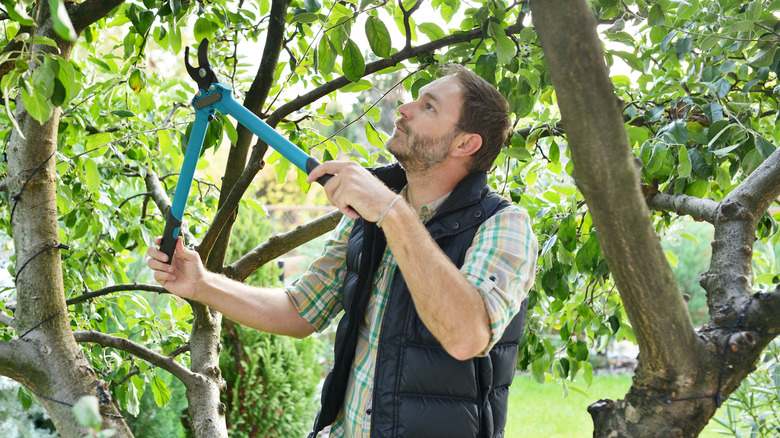Pruning your elm trees isn’t simply a chore; it’s a vital part of their care and maintenance. The optimal times for this task are during the fall, after the leaves have gracefully fallen, or on the cusp of early spring before the sap starts its journey, typically around March. During these periods, your elms are in a state of rest, making them less susceptible to stress and the dreaded diseases that can accompany pruning during other times of the year. Diving into the timing a bit more — pruning when the tree is dormant allows for a couple of key benefits.
Firstly, due to the absence of leaves, the structural integrity and architecture of your elm are laid bare, making it easier to spot and decide which branches need to go. This visibility ensures that your pruning cuts are deliberate and beneficial to the tree’s overall form and health. Secondly, the risk of attracting unwanted pests, which are drawn to the sap that oozes from fresh cuts, is significantly reduced. These pests are not just a nuisance; they can be carriers of diseases, including the infamous Dutch elm disease which has devastated elm populations. Moreover, the act of pruning trees is not merely about removing unwanted branches; it’s about encouraging your elm to grow healthier. This process allows for new growth to take place in a direction that benefits the tree’s structure and stability, ensuring it continues to grace your landscape with its majestic presence for years to come.
How to prune elm trees

When you begin pruning, your first step is to remove any dead, diseased, or damaged branches. This initial action lays the groundwork for a healthier and more visually appealing tree. Keep your focus on the crown to ensure all areas surrounding it remain balanced. Navigating the tree’s architecture, you might encounter a scenario where an obvious leader — the main upward-growing branch — is missing. In such cases, your task is to identify a strong, healthy branch that can fill this pivotal role. Once chosen, you’ll want to trim it down by about a third to a half of its length. This might seem counterintuitive, but it encourages the leader to grow stronger and healthier. Also, take a moment to clear away any smaller branches that are within 6 to 12 inches of the leader’s tip. Conversely, if your elm already boasts a clear leader, your goal shifts to maintaining its dominance. This means trimming away any ambitious branches that dare to challenge its supremacy.
As you delve further into the pruning process, direct your attention to the branches inching towards the main stem. These need to go, as new growth thrives best when directed outward, crafting a robust, well-structured tree. Moving to the tree’s lower regions, the strategy alters slightly. Here, you’ll remove branches from the bottom third to the bottom half of the tree — a decision influenced by the tree’s height and overall structure. This careful trimming fosters a clear trunk, channeling the tree’s energy upwards and promoting a lush, vibrant canopy.
Care tips before and after pruning

Before you dive into the task of pruning, ensure your equipment is sterilized to halt the transmission of diseases from one tree to another. A simple mix of bleach and water or any specialized disinfectant does the trick to effectively sanitize your tools both before you start and after you’re done. Post-pruning care is equally important to jumpstart the tree’s recovery process. Adequate watering is essential, particularly if you find yourself pruning in the early spring. This period can be a bit stressful for trees, as they’re just coming out of dormancy and are vulnerable. Providing enough water ensures that the tree can heal properly and bounce back stronger, ready to face the upcoming seasons with vigor.
When it comes to mature trees, a schedule of thorough pruning every three years, complemented by annual light pruning, is ideal. This cycle of care helps to weed out any dead or dying branches, preventing potential problems before they start. And if you live in an area where Dutch elm disease poses a threat, you need to be observant. This disease has the potential to wreak havoc on elm populations. Still, with timely action, such as the prompt removal of affected branches, you can protect not only your trees but also contribute to the overall health of the surrounding elm community.